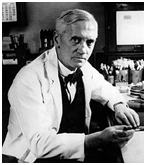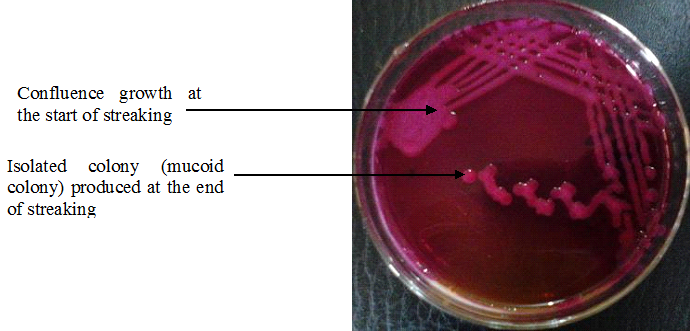Alexander Flemming, a Scottish born physician who spent most of his time studying bacteria discovered the world’s first antibiotic “Penicillin” from the mould Penicillium notatum. Though, mankind has used a number of chemicals including herbs to treat infectious diseases since time immemorial, the astonishing discovery of penicillin (the first therapeutically used antibiotic) marked the beginning for the intensified exploration for other sources of antimicrobial agents even till date. Penicillin unlike other chemotherapeutic agents is a microbial product which can inhibit or kill susceptible microorganisms.
The discovery of penicillin by Flemming opened another era for chemotherapy; and the use of antimicrobial agents to control infectious diseases. Penicillin was found to be the most effective chemotherapeutic agent against infectious diseases as at the time of its discovery before the development of resistance against the antibiotic. In 1928 Alexander Flemming streaked some plates of Staphylococcus aureus and left them to incubate until his return from a summer holiday he embarked on. In an unlikely set of circumstances, the beginning of the holiday was cold, and this allowed some contaminating mold spores (that had blown in from a nearby window) to grow up on some of Flemming’s cultured plates.
The increase in temperature encouraged the growth of the S. aureus. Normally, many experimenters when confronted with a contaminated plate will eventually look for the trash bin in order to repeat their experiment, but this was not the case for Alexander Flemming, who instead, spent some time to further examine the plates. Upon examination, Flemming discovered that the fungus growing in his S. aureus plates had a zone of clearing around it where the Staphylococcus colonies would not grow.
Flemming clearly guessed that the fungus was producing an antibacterial compound that had diffused into the medium, and which inhibited the growth of the S. aureus. Surprised by his findings, he cultured the fungus, a Penicillium mold, and eventually isolated a soluble extract that could kill or inhibit the growth of bacteria; and the compound was used to treat localized bacterial infections. Flemming later called the new compound penicillin after the mold from which it came. But due to limitations in the available technology as at the time, however, it was very difficult to prepare a solution that could be used throughout the body without causing problems.
During World War II, the search for compounds that could fight infectious diseases increased as a result of increase in the number of wounded soldiers who died from life-threatening diseases caused by microorganisms (particularly bacteria). This led Sir Howard Florey and Ernst Chain (both from Oxford University) to start a systematic study of antimicrobial compounds with the view of developing treatments for wounded soldiers. In their search, they ran into Alexander Flemming’s report which was written 9 years earlier, and this led them to develop methods for the industrial production and purification of penicillin in England in 1941, a procedure which Flemming could not undertake as at the time he discovered penicillin – the “miracle drug”.
The availability of penicillin saved countless number of wounded soldiers in World War II, and Florey and Chain, Flemming was awarded the Noble prize in Medicine and Physiology in 1945. Though there is a global threat of microbial resistance to some available drugs, the discovery of antibiotics by Sir Alexander Flemming and others has continued to positively impact medicine even till date. And the continued rise in antibiotic resistant pathogens has stepped up the search for the discovery and development of newer antimicrobial agents that will be less-amenable to microbial degradation or hydrolysis.
References
Barrett J.T (1998). Microbiology and Immunology Concepts. Philadelphia, PA: Lippincott-Raven Publishers. USA.
Beck R.W (2000). A chronology of microbiology in historical context. Washington, D.C.: ASM Press.
Brooks G.F., Butel J.S and Morse S.A (2004). Medical Microbiology, 23rd edition. McGraw Hill Publishers. USA. Pp. 248-260.
Chung K.T, Stevens Jr., S.E and Ferris D.H (1995). A chronology of events and pioneers of microbiology. SIM News, 45(1):3–13.
Nester E.W, Anderson D.G, Roberts C.E and Nester M.T (2009). Microbiology: A Human Perspective. Sixth edition. McGraw-Hill Companies, Inc, New York, USA.
Salyers A.A and Whitt D.D (2001). Microbiology: diversity, disease, and the environment. Fitzgerald Science Press Inc. Maryland, USA.
Slonczewski J.L, Foster J.W and Gillen K.M (2011). Microbiology: An Evolving Science. Second edition. W.W. Norton and Company, Inc, New York, USA.
Summers W.C (2000). History of microbiology. In Encyclopedia of microbiology, vol. 2, J. Lederberg, editor, 677–97. San Diego: Academic Press.
Talaro, Kathleen P (2005). Foundations in Microbiology. 5th edition. McGraw-Hill Companies Inc., New York, USA.
Wainwright M (2003). An Alternative View of the Early History of Microbiology. Advances in applied microbiology. Advances in Applied Microbiology, 52:333–355.
Discover more from Microbiology Class
Subscribe to get the latest posts sent to your email.





